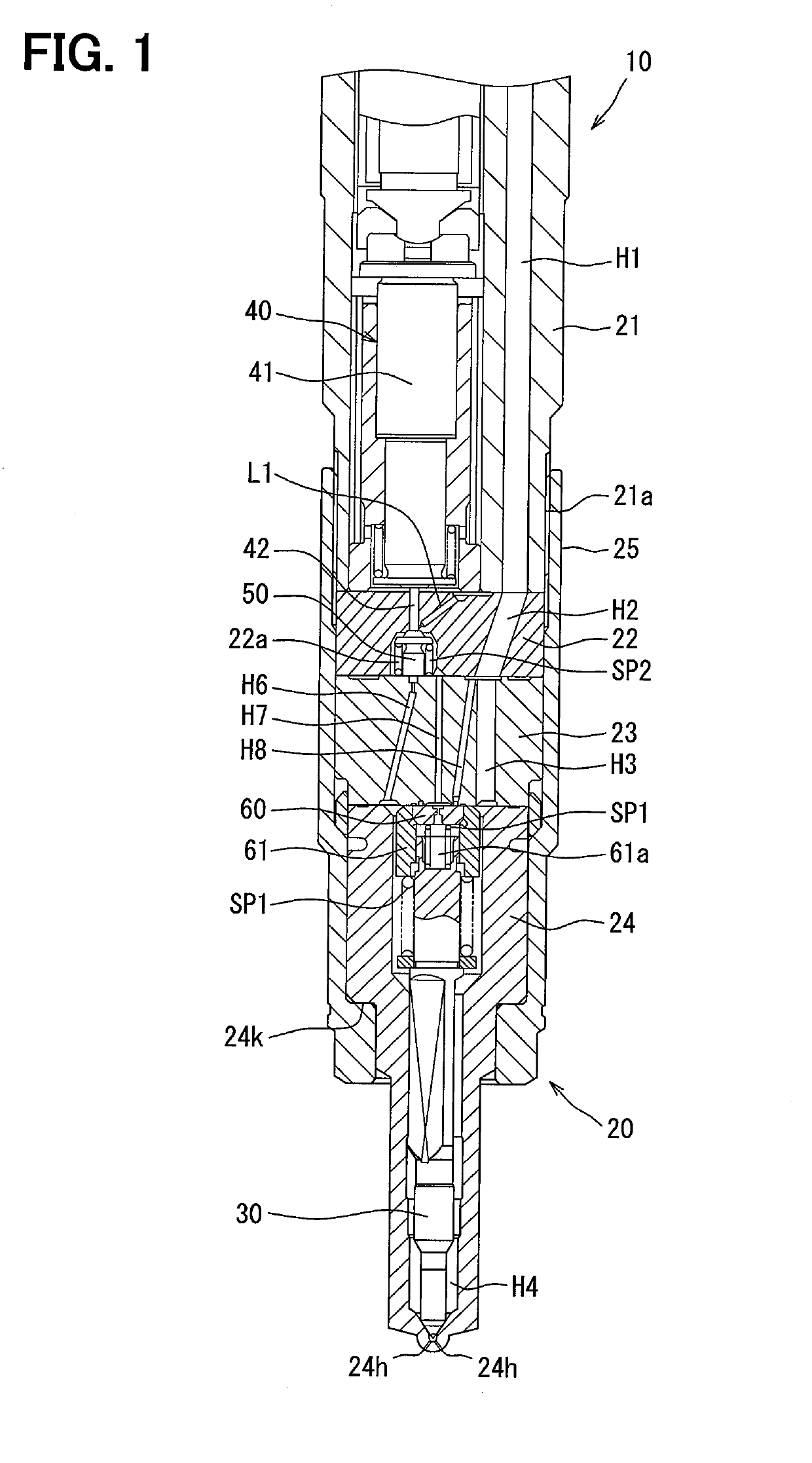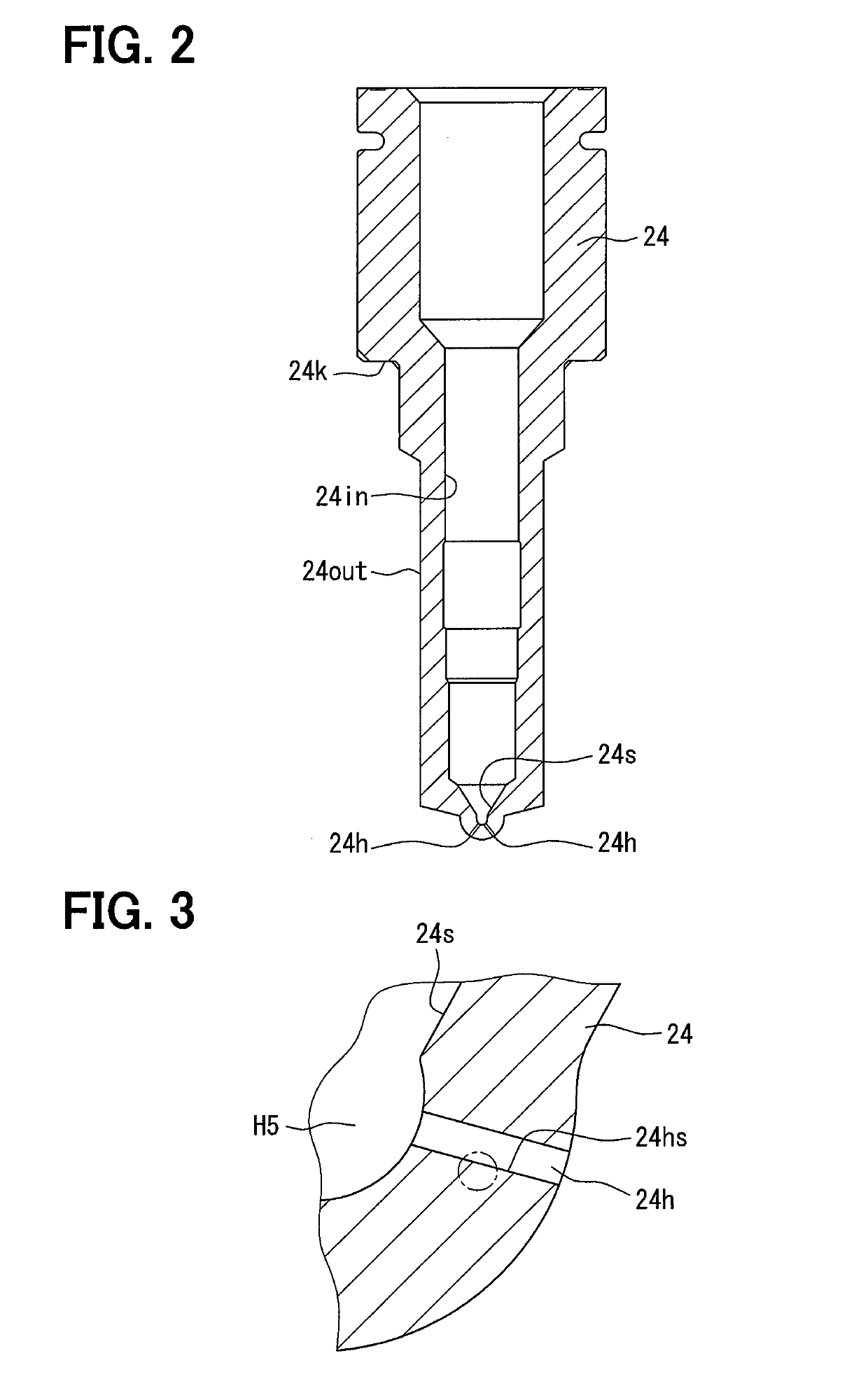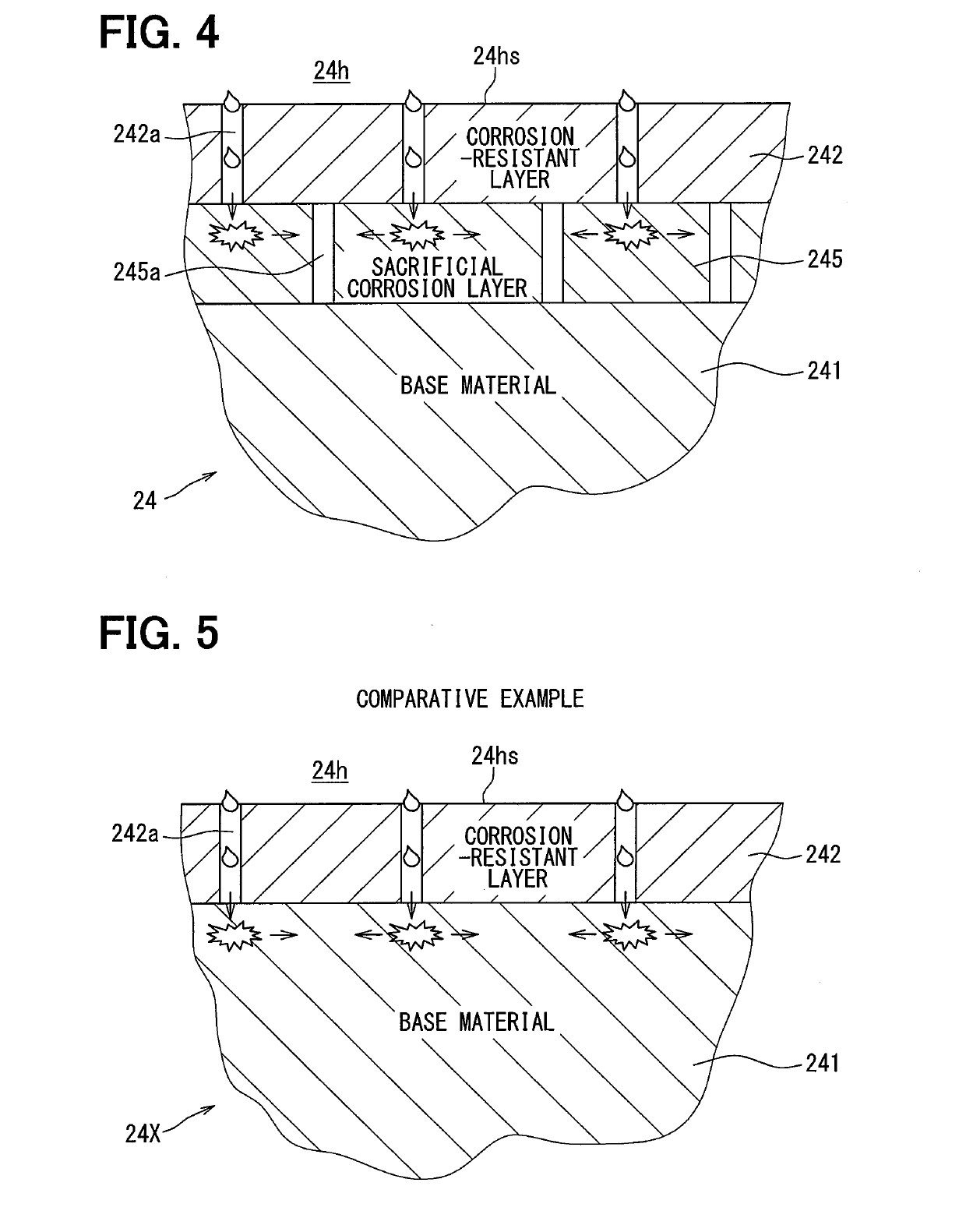Fuel injection valve
a fuel injection valve and valve body technology, applied in the direction of fuel injection apparatus, charge feed system, corrosion prevention fuel injection, etc., can solve the problems of accelerated corrosion concern for the corroding of the valve body, and limited improvement of the measur
- Summary
- Abstract
- Description
- Claims
- Application Information
AI Technical Summary
Benefits of technology
Problems solved by technology
Method used
Image
Examples
first embodiment
[0020]A fuel injection valve of a first embodiment of the present disclosure injects fuel, which is used in combustion in an internal combustion engine, from an injection hole. The internal combustion engine is a compression ignition diesel engine, and is mounted in a vehicle as a traveling drive source. Fuel (for example, light oil) reserved in an undepicted fuel tank is pressure-fed into a common rail by a high-pressure fuel pump, and then distributed from the common rail into each fuel injection valve 10, and injected into a combustion chamber from the fuel injection valve 10.
[0021]As shown in FIG. 1, the fuel injection valve 10 includes a body 20, a valve needle 30, a drive part 40, a control valve element 50, a control plate 60, and a cylinder 61.
[0022]The body 20 includes a plurality of metal components such as a drive part body 21, a valve plate 22, an orifice plate 23, and a valve body 24, which are combined together by a retaining nut 25. Specifically, the retaining nut 25 ...
second embodiment
[0047]As shown in FIG. 6, a valve body 24A of a second embodiment has an intermediate layer 244 located between the sacrificial corrosion layer 245 and the corrosion-resistant layer 242. The intermediate layer 244 is provided by stacking a plurality of films. In FIG. 6, the respective films are denoted as intermediate layers 244a, 244b, and 244c.
[0048]The intermediate layers 244a, 244b, and 244c are each formed by a method of depositing a film on a surface of the sacrificial corrosion layer 245 through a chemical reaction in a vapor phase, i.e., formed by a chemical vapor deposition process. In particular, the intermediate layers 244a, 244b, and 244c are desirably formed by atomic layer deposition (ALD) as one chemical vapor deposition process.
[0049]The linear expansion coefficient of the intermediate layer 244 is lower than that of one of the sacrificial corrosion layer 245 and the corrosion-resistant layer 242, and higher than that of the other of them. For example, when the line...
third embodiment
[0059]The valve body 24 of the first embodiment has a structure where the sacrificial corrosion layer 245 and the corrosion-resistant layer 242 are provided on the base material 241 as shown in FIG. 4. On the other hand, a valve body 24B of a third embodiment has a structure where a diffusion deterring layer 243 is provided on the base material 241 in addition to the sacrificial corrosion layer 245 and the corrosion-resistant layer 242 as shown in FIG. 7. The diffusion deterring layer 243 is now described in detail.
[0060]The diffusion deterring layer 243 is located between the base material 241 and the sacrificial corrosion layer 245, and is made of a material, for example, aluminum oxide (Al2O3), in which diffusion of a metal component (for example, iron) of the base material 241 is less likely to occur than in the corrosion-resistant layer 242 and in the sacrificial corrosion layer 245. Although “diffusion” is known as a phenomenon where a substance spreads in a gas or liquid, ato...
PUM
 Login to View More
Login to View More Abstract
Description
Claims
Application Information
 Login to View More
Login to View More - R&D
- Intellectual Property
- Life Sciences
- Materials
- Tech Scout
- Unparalleled Data Quality
- Higher Quality Content
- 60% Fewer Hallucinations
Browse by: Latest US Patents, China's latest patents, Technical Efficacy Thesaurus, Application Domain, Technology Topic, Popular Technical Reports.
© 2025 PatSnap. All rights reserved.Legal|Privacy policy|Modern Slavery Act Transparency Statement|Sitemap|About US| Contact US: help@patsnap.com



